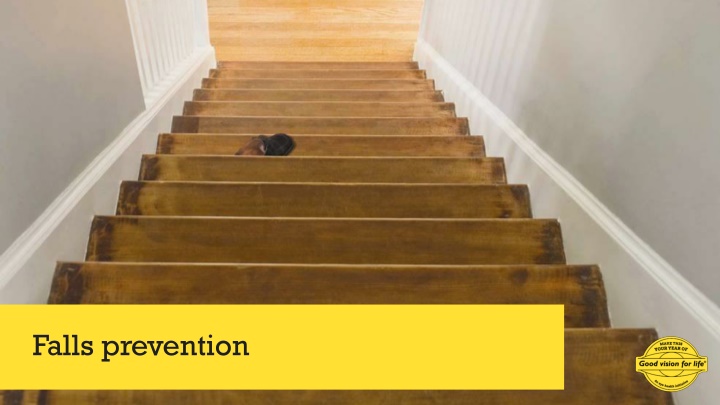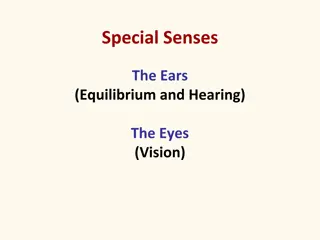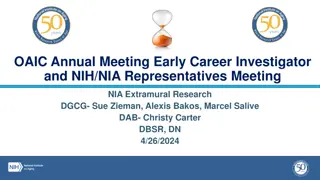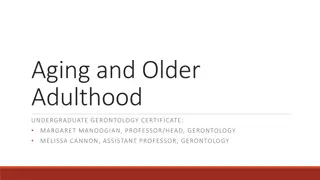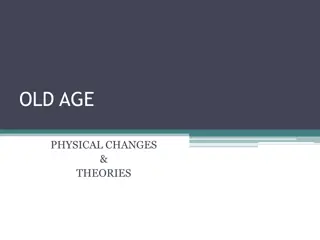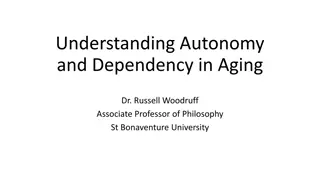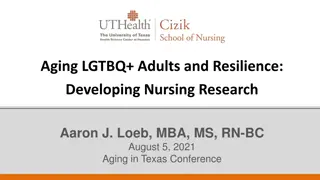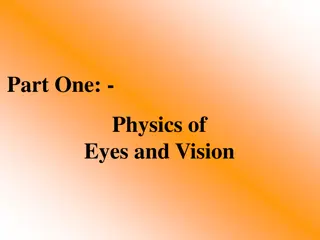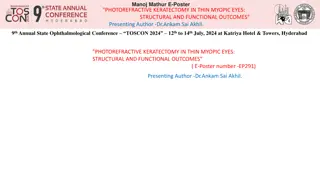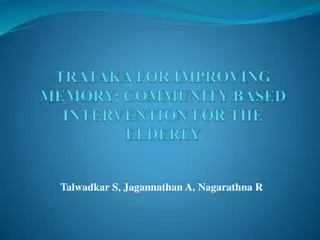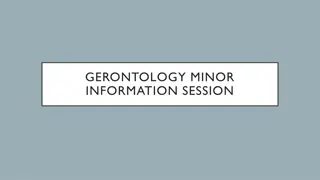Aging Eyes and Vision Changes
As you age, your eyes undergo various changes that can impact your daily life, including slower adjustment to light, sensitivity to glare, blurred vision, and decreased depth perception. Conditions like diabetes can also affect eye health. Regular eye check-ups and understanding different aspects of vision can help identify and manage issues to prevent falls and other risks.
Download Presentation

Please find below an Image/Link to download the presentation.
The content on the website is provided AS IS for your information and personal use only. It may not be sold, licensed, or shared on other websites without obtaining consent from the author.If you encounter any issues during the download, it is possible that the publisher has removed the file from their server.
You are allowed to download the files provided on this website for personal or commercial use, subject to the condition that they are used lawfully. All files are the property of their respective owners.
The content on the website is provided AS IS for your information and personal use only. It may not be sold, licensed, or shared on other websites without obtaining consent from the author.
E N D
Presentation Transcript
As you get older, so do your eyes This can affect your life in many ways
Visual changes due to age Slower to adjust to altered light levels More sensitive to glare Blurred vision Loss of contrast Decrease in depth perception
Diabetes facts Nearly 5% of Australians have diabetes More than 70% of people with diabetes will develop diabetes related eye problems within 15 years of diagnosis
Vision is a risk factor for falls A number of studies of the risk of falling have found a link with decreased vision
Different aspects of vision to consider 1. Visual acuity 2. Contrast sensitivity 3. Visual field ( your side vision)
Different aspects of vision to consider 1. Visual acuity A measure of how clearly you can see Measured with a letter chart at a distance (usually 6m)
What causes a decrease in visual acuity? Refractive errors Short-sightedness Long-sightedness Astigmatism Presbyopia Eye disease
Short sightedness (myopia) Distance vision is blurry near vision usually okay Short sighted focus Short sighted correction
Long sightedness (myopia) Difficulty seeing clearly and comfortably up close Long sighted focus Long sighted correction
Astigmatism The eye is shaped more like an Aussie Rules football than a basketball Focusing error that causes blur in one direction
Presbyopia Begins from age 40+ Small print is clearer if held further away The lens inside the eye is less flexible Reading glasses restore close vision
Different aspects of vision to consider 2. Contrast sensitivity How clearly can shades, patterns or edges be differentiated Steps Changing floor conditions Edges Affected by lighting
What causes a decrease in contrast sensitivity? Age Cataract Macular degeneration Diabetic retinopathy
Cataract Cloudiness in lens of eye Blurred vision Usually gradual loss of vision Common after 60 May require surgery
Age-related macular degeneration Deterioration of central retina Affects close vision Distorted vision, patches missing Some treatment is available
Normal retina Retinal blood vessels Optic nerve Macula
Diabetic retinopathy Changes to retinal blood vessels More likely when Person has been diabetic for a long time Blood sugar is not controlled well Some treatment available Requires regular eye review
Different aspects of vision to consider 3. Visual field How much side vision do you have? Mobility Steps Objects on floor Doorways
What causes a decrease in visual field? Glaucoma CVA (cerebral vascular accident) or stroke Both age related conditions
Glaucoma Disease of optic nerve Loss of peripheral (side) vision Prevalence increases with age and family history Treatment best in early stages
Regular eye exams are important People who don t have good vision are more likely to fall No referral is required Eye exams attract a Medicare rebate Find your local optometrist at: https://www.optometry.org.au/find-an-optometrist/
Optometrists Provide a thorough vision and eye health exam Detect and diagnose eye health problems Prescribe and supply glasses and contact lenses when required Diagnose and treat eye coordination and focusing problems
Download: Guidelines for optometrists to help prevent falls in older patients (2020)
